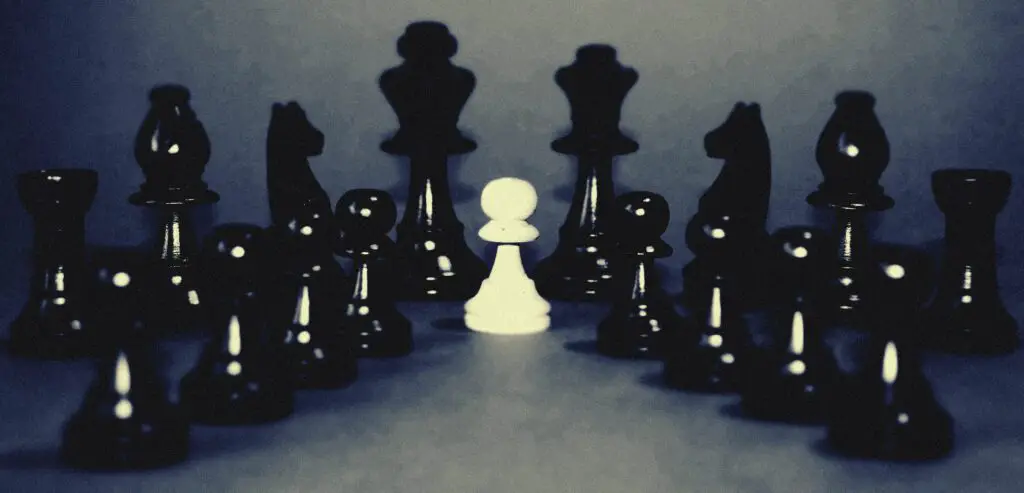Glicko vs Elo in Chess – Introduction
Contents
- 1 Glicko vs Elo in Chess – Introduction
- 2 Understanding the Elo Rating System
- 3 Exploring the Glicko Rating System
- 4 Comparing the Mechanics of Glicko and Elo
- 5 Application and Impact in Chess Communities
- 6 Pros and Cons of Glicko and Elo
- 7 Evolution and Future of Chess Ratings
- 8 Personal Preferences and Conclusion
In the world of chess, where every move can be a masterpiece or a blunder, the concept of skill assessment takes center stage. It’s not just about capturing opponents’ pieces; it’s about capturing victories that reflect your true chess acumen.
Enter the realm of chess rating systems: Glicko and Elo.
These unassuming algorithms wield the power to determine how skilled a player truly is, transcending the 64 squares of the board. Let’s embark on a journey to unravel the intricacies of Glicko vs Elo and understand how they shape the chess world.
Understanding the Elo Rating System
Imagine chess as a grand tournament, where each player wears their rating like a badge of honor. The Elo rating system, devised by Arpad Elo, assigns a number to each player, a number that’s not just a numerical value but a reflection of their prowess. When you face an opponent, it’s not just a battle of pieces; it’s a clash of ratings.
Let’s consider an example: You, a chess enthusiast, challenge a player with a higher Elo rating. The outcome is like a symphony of numbers, where your victory resonates in a crescendo of points. Your rating climbs, capturing the essence of triumph over a stronger opponent.
Exploring the Glicko Rating System
But wait, there’s another player in this rating arena: Glicko. Crafted by Mark E. Glickman, this system is a maestro of nuances. It doesn’t merely calculate wins and losses; it reads between the moves. Glicko understands the uncertainty that shrouds your actual skill level, akin to a chess strategist analyzing an opponent’s hidden motives.
Imagine you, the underdog, challenging a seasoned player. If you win, Glicko acknowledges the upset. It doesn’t just change numbers; it captures the essence of defying odds and updates ratings with a touch of sensitivity.
Comparing the Mechanics of Glicko and Elo
Elo is like a well-structured game plan—it’s clear, concise, and effective. Your rating reacts to wins and losses directly, like pieces being exchanged on the board. It’s the foundation of chess ratings, and its simplicity is its strength.
On the other hand, Glicko is the master of adaptation. It’s like analyzing every move’s subtleties, the ebb and flow of the game. It’s not just about the result; it’s about understanding your growth journey. Glicko considers uncertainty, acknowledging that a single victory might not define your skill.
Application and Impact in Chess Communities
In the grand theater of chess, these rating systems play different roles. Elo, the venerable veteran, is the lingua franca of chess clubs and tournaments. Its simplicity enables players to gauge their progress and compete on an equal footing. It’s like the universal handshake that chess enthusiasts around the globe understand.
Glicko, a more enigmatic presence, finds its place in select competitive settings. It’s the whisper in the ear of those who seek depth beyond victories and losses. Picture a high-stakes tournament where players are ranked based on Glicko ratings. It’s a realm where every match is a chapter in a grand saga, where a single move can rewrite the narrative of the entire event.
Pros and Cons of Glicko and Elo
Elo’s reliability is akin to a well-tuned instrument. It has stood the test of time, guiding players through generations. Its straightforwardness provides a stable foundation for players of all levels. However, its simplicity might lack the finesse required to capture the intricacies of modern chess dynamics.
Glicko, like a complex strategy, dives deep into the ocean of uncertainty. It recognizes the volatility of skill levels and adjusts ratings with a touch of artistry. Yet, its complexity might be a hurdle for newcomers, akin to learning a complex opening sequence.
Evolution and Future of Chess Ratings
As chess evolves with technological advancements, so do its rating systems. Imagine AI joining the match, analyzing games with precision and speed beyond human capabilities. The future promises a harmonious symphony of human intuition and AI accuracy, elevating the art of chess to new heights.
Personal Preferences and Conclusion
When it comes to choosing between Glicko and Elo, it’s like selecting your play style: aggressive or strategic. Elo, the classic, offers stability and familiarity. Glicko, the enigma, adds layers of depth for those who seek it. Whether you’re a casual player seeking a quick match or a dedicated strategist analyzing every move, these systems have a place for you.
As the pieces dance across the board, remember that Glicko and Elo are the choreographers, orchestrating the rhythm of the game. It’s not just about checkmates; it’s about the journey, the growth, and the magic that numbers bring to the chessboard. So, the next time you make your move, know that Glicko and Elo are there, silently adjudicating your performance. The game is afoot—Glicko vs Elo. Who shall emerge victorious? The answer lies in the dance of the numbers.








